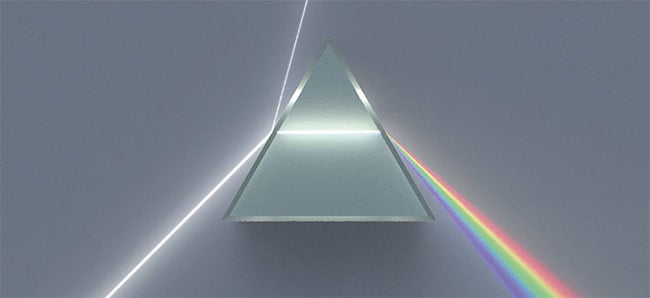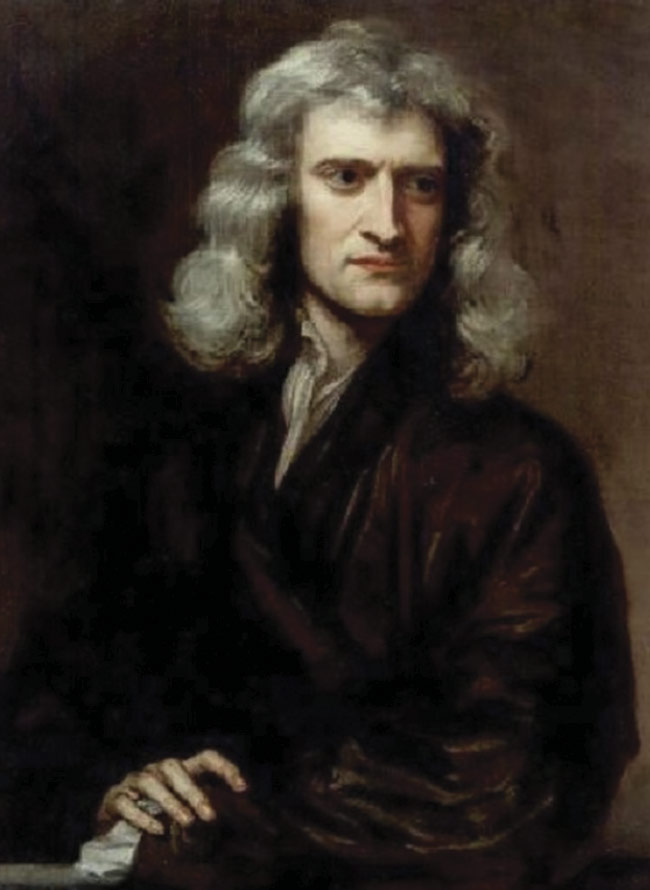According to BCC Research, the global market for spectroscopy equipment is on track to reach more than $16 billion by 2023. The market encompasses a variety of techniques, ranging from absorption to Raman spectroscopy, and it has enabled applications in end markets including research, industry, and biotechnology. Tracing the size, scope, and diversity of the technology’s origins could fill a book. And it would be difficult to ignore the contributions of Isaac Newton and the prism experiments he described in his seminal 1704 work, Opticks.
In Newton’s time, prevailing theories about optics stated that color was a mixture of light and darkness. Rainbows created by prisms were thought to be colored by the prisms themselves.
Newton was unfazed. He noted that printed ink on the white page of a book appears gray, not colored, when viewed from afar. Unsatisfied with the popular theories, he began experimenting by projecting light through a prism and then through a hole in his shutters.

Newton’s prism experiments demonstrated that different colors were all components of white light. Courtesy of Spigget/CC by SA 3.0.
“In a very dark Chamber, at a round hole, about one third Part of an Inch broad, made in the Shut of a Window,
I placed a Glass Prism,” Newton wrote
in Opticks.
In his experiments, he projected light through the prism onto a white sheet of paper that he had propped on a chair. The light revealed an elongated image of the sun, mostly white, but with a blue upper edge and a red lower edge. In his next attempt, Newton projected the light through a narrow slit, producing a rainbow. To prove that the light was not simply colored by the prism, he passed the light through two prisms, one that split it into a spectrum and another that recomposed it back into white light.
Newton further cemented the evidence that sunlight comprises a spectrum of
colors by performing a number of subsequent experiments with prisms. In one, he created a rainbow using a single prism, and he then passed individual spectra through the slit in the sheet of paper. The light then passed through another prism and remained the same color, demonstrating that the prism was not corrupting the light.

Portrait of Isaac Newton at 46 by Godfrey Kneller (1689). Courtesy of Wikimedia Commons.
The field of spectroscopy in the modern sense had yet to become a foregone conclusion following Newton’s experiments. Scientists such as Robert Hooke, Christiaan Huygens, and Thomas Young contributed their own experiments with prisms that collectively led to the conclusion that chemicals had specific spectra associated with them.
Experimentation by Joseph von Fraunhofer, about 150 years after Newton’s time, would yield diffraction gratings, which allowed scientists to observe matching spectra across various laboratories. In the 1860s, Robert Bunsen and Gustav Kirchhoff began to systematically attribute spectra to chemical elements, developing ground truths that would enable spectroscopy to be used to identify the chemical components of samples.
All of these early experiments built upon Newton’s curiosity and his innovative use of prisms, eventually defining spectroscopy as a field of research and leading to the technology we recognize today that has practical applications across innumerable industries.